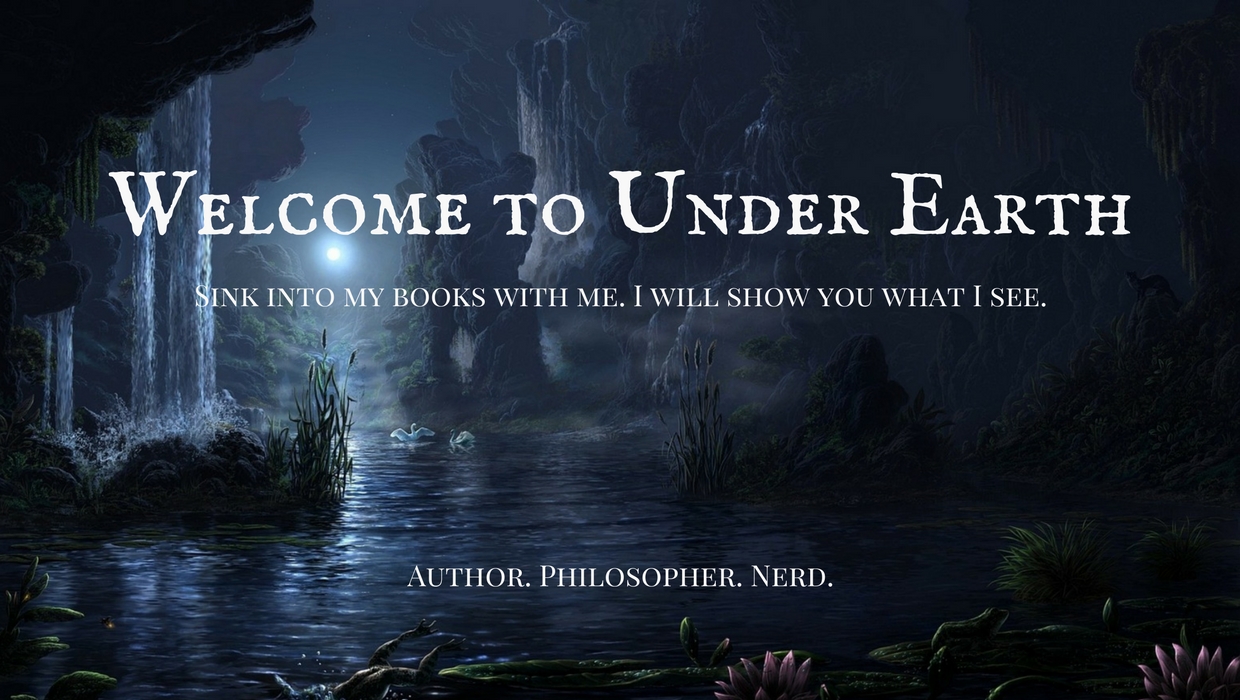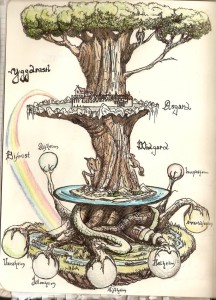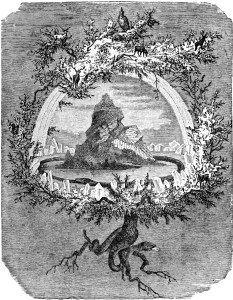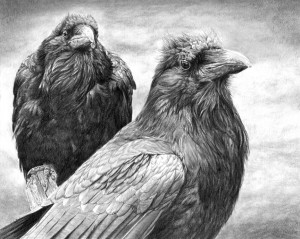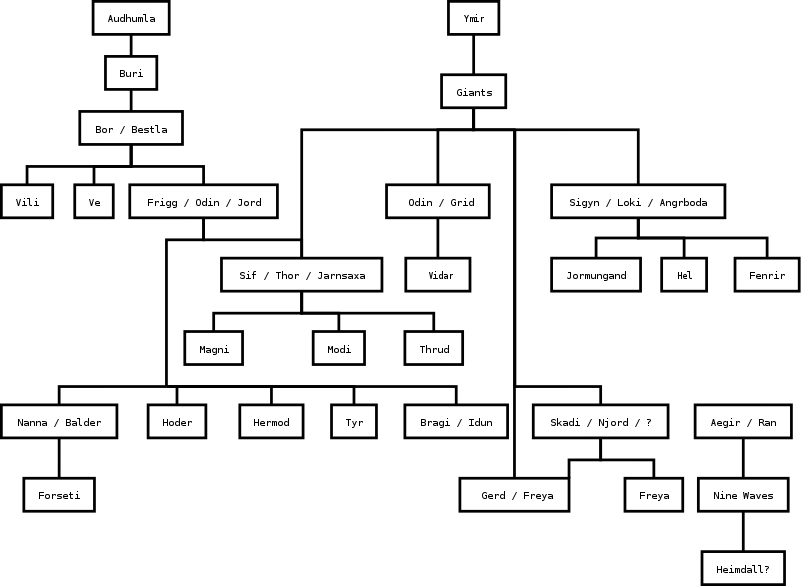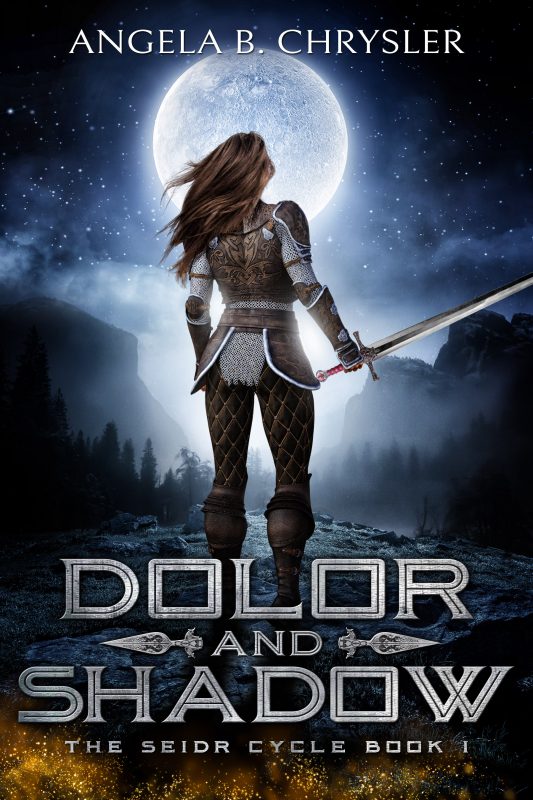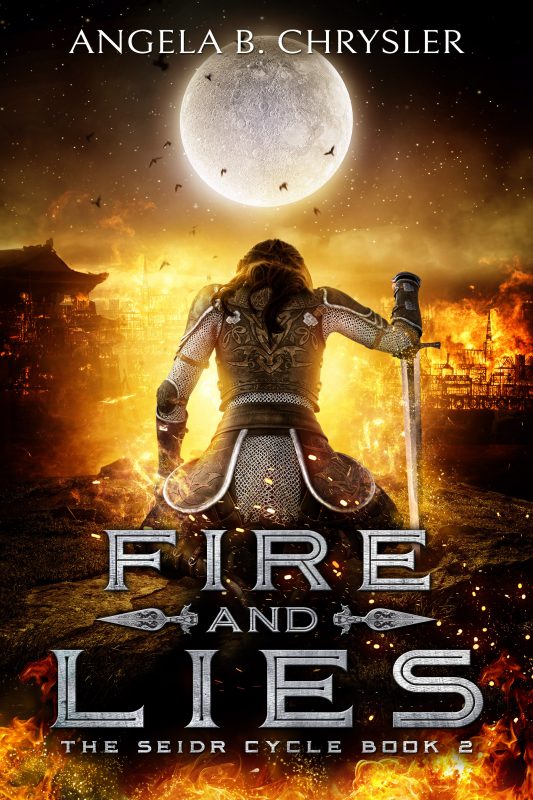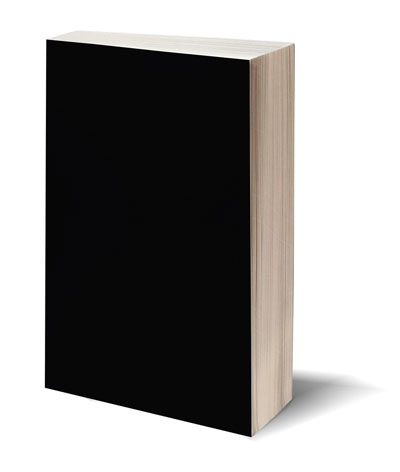I lied! I am not covering Geography just yet. First, I want to cover Norse Myth.
I had studied Greek/Roman and Egyptian Mythology as early as eleven years old when I read my Encyclopedia set for fun. I would not branch away from those myths for another fifteen years. So when I began Dolor and Shadow, I was starting from scratch.
We all know Thor, Odinn, and Loki. Especially with Stan Lee’s movies coming out one year after the other…
But I needed to familiarize myself with the full ensemble of characters. I knew what went into myths. By 2008, I had studied theology, philosophy, the primary world religions including Zoroastrianism, and ancient myth.
Mythology is only a dead religion and all religions supply answers for five basic questions:
- An explanation for the beginning and the world (Creation theories)
- An explanation for the end (Ragnarok/Apocalypse/Armageddon)
- A location for the gods and creatures to reside
- An explanation for death and the after life
- A list of gods including a description and story to accompany their feats.
Here we go!
According to Norse Mythology…
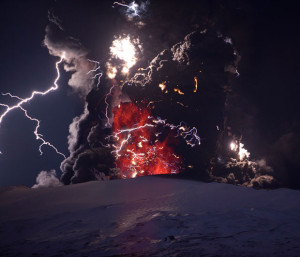 The beginning is Ginnungagap, which means “the Great Gap.” Ancient Norsemen believed there was a split and from the gap life emerged.
The beginning is Ginnungagap, which means “the Great Gap.” Ancient Norsemen believed there was a split and from the gap life emerged.
The world sits upon Yggdrasil: the Giant Ash Tree or World Tree. Norse Mythology has nine realms where each creature exists.
- Midgard – The Garden of man
- Alfheim – The Home of the Alfar (or Elf)
- Jotunheim The home of Jotun (Giants)
- Helheim – The home of Hel. Hel is Loki’s daughter and keeper of the Dead.
- Vanaheim – The home of the Vanir (Race of gods)
- Asgard – The Garden of the Aesir (Race of gods)
- Muspellsheim – Home of Fire
- Niflheim – Home of Ice
- Svartalfaheim – Home of the Svartalfar (Black Elves AKA Dvergar or Dwarves)
Yeah! I remembered those all in one shot! *pats my own back*
Gard means Garden and Heim means Home. Vanaheim and Asgard are my own interpretations, but really, Asgard and Vanaheim is where the two sets of gods live. Vanir and Aesir.
And yes, there is a lot of suspicion that the Dwarves were really “Black Elves.”
The Vanir is Freyr and Freyja while the Aesir are Thor, Odinn, Frigg, Sif, and Idunn.
In my book, I reverse this. So that the Aesir are Frey and Freyja and the Vanir are Thor, Odinn, Baldr, Frigg, and Sif. I reverse it…for many reasons. Another post perhaps.
Loki is a giant. So Is Surtr.
Ragnarok is the story told by a Seer to Odinn as to how the Norse gods will all die. Basically, Loki and Surtr lead Hel and the undead into war against the gods.
When someone dies, it was believed that Odinn who feared Ragnarok, collected the warriors and brought them to Valhalla where they would train until Ragnarok. All others went to Helheim. Of all the cultures, Norse Mythology went on to influence our culture the most.
Father Christmas is Odinn
The eight reindeer represents Odinn’s eight legged horse Sleipnir, who is also Loki’s son. Reindeer are the number one meat in Norway aside from fish.
We hang mistletoe because of Baldr who Loki killed.
Loki was fun. My Loki is Loptr. I used Loki’s name from the Old Norse texts. I did this because of Tom Hiddelston. To be blunt, he did such a good job forming Loki in our modern minds, that I wanted my Loki to be disassociated from Mr. Hiddelston. I interpreted Loki’s actions and behaviors completely differently than Stan Lee.
Loki was not a prankster. He was a man with an agenda. Loki had several children. Sleipnir, Jörmungandr, Fenrir, and Hel. Jörmungandr is a world serpent. Fenrir is a giant wolf-dog. And Hel is the guardian of the dead. But I want to draw your attention to Sleipnir. If Odinn is riding Loki’s son, the eight-legged horse Sleipnir, then why…why doesn’t Loki have Sleipnir? How did Odinn get him?
Loki was challenged to interfere with a builder, so Loki woos the builder’s male horse, Svaldifari. Loki is a shape-changer and turns himself into a mare. He Svaldifari and Loki sire Sleipnir who Odinn owns.
This also raised more questions when I read of the great feast that Loki wasn’t invited to.
From Wikipedia…
Lokasenna (“Loki’s flyting,” “Loki’s wrangling,” “Loki’s quarrel”) is one of the poems of the Poetic Edda. The poem presents flyting between the gods and Loki.
Loki, amongst other things, accuses the gods of moralistic sexual impropriety, the practice of seidr, and bias. Not ostensibly the most serious of allegations, however these elements are said ultimately to lead to the onset of Ragnarok in the Eddic poem Völuspá. However, Lokasenna does not directly state that Loki’s binding is as a consequence of the killing of Baldr. This is explicitly stated only in Snorri’s Prose Edda.
Lee M. Hollander, in his introduction to his translation of the poem, claims that it was in no sense a popular lay and suggests we should not necessarily believe that the accusations of the “sly god” were an accepted part of the lore.
I read the Lokasenna and was floored by what I learned. This passage was spoken by Loki.
9. “Remember, Othin, | in olden days
That we both our blood have mixed;
Then didst thou promise | no ale to pour,
Unless it were brought for us both.”
Other interpretations basically explain that Thor, Loki, and Odinn used to go hunting together and swap women with acts of vile behavior. At one point, Loki is accused of cross dressing and “woman” practices and Loki points out that Odinn was right there alongside him conducting these same practices.
My thoughts? Loki and Odinn used to be so close in friendship as to have been brothers. You can read the manuscript here at Sacred Texts.
So this text got me thinking and asking questions like:
- What happened between Loki and Odinn?
- Who was Loki really?
- Why would Loki betray Odinn after having such a strong bond and friendship?
- Why did Loki cut Sif’s hair and kidnap Idunn?
- What were Loki’s real motives for “accidentally” killing Baldr?
I don’t think Loki was as silly or stupid as to “accidentally” kill Odinn’s favorite son. I think there is a lot more to the myth. Tales of the Drui provides an alternate explanation to these questions.
